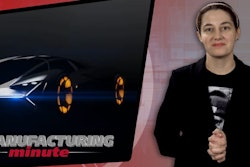There's been talk about a "tsunami of technology" heading our way within manufacturing, including additive, IoT, robotics and more. Many mid-sized manufacturers are surprisingly unfazed by this incoming wave of changes. We spoke to over two dozen manufacturers across the midwest, and found that the majority even entirely disregard the future impact of these technologies to their business. Some of them have said:
"Our current technology works just fine."
"It costs too much to change to new technologies, and it always slows down productivity."
"Our culture isn't good at adopting new technologies, and we'd lose some great people if we made a major change."
"Certain technologies are really for larger companies, and these types of things won't impact our business."
While there's a nugget of truth in each of those statements, these manufacturers are missing the big picture. In the past, changes in technology have been incremental — one new innovation comes along every 10, 20, 30 years, and the organization has time to adjust and adopt.
Today, the pace of change has sped up dramatically more than in years past. According to a 2013 article in Harvard Business Review, "It took 30 years for electricity and 25 years for telephones to reach 10 percent adoption but less than five years for tablet devices to achieve the 10 percent rate. It took an additional 39 years for telephones to reach 40 percent penetration and another 15 before they became ubiquitous. Smart phones, on the other hand, accomplished a 40 percent penetration rate in just 10 years."
And rapid technology changes are the biggest threat to manufacturing today. According to Forbes, the rapid rate of technological and digital advance was the biggest challenge for global manufacturing business leaders according to their 2015 industrial leadership survey.
Technology was chosen as a major challenge by 68 percent of respondents, compared with 60 percent who cited shifts in economic and political power and 59 percent who named climate change as among the biggest threats.
While manufacturers sit idly by and hope this technology wave is a passing fad, they are continuing to fall behind, faster than ever before. Technology grows exponentially. The doubling of computer processing speed every 18 months, known as Moore's Law, is just one manifestation of the greater trend that all technological change occurs at an exponential rate.
Integrating new technology, whether in operations, customer-facing engagement, communications, marketing, sales, or customer service, is now essential instead of optional. Shaping your organizational culture to adopt and embrace change is a critical factor for success. Whether you have already begun to embrace technology or are fighting hard to resist it, this wave will come, and impact not only the way you do business, but more importantly, how your customers do business with you.
If you're not ready to serve them using the technology they are already adopting, you'll find it's not your organization forcing change, but customers that are demanding it.
Andrea Olson is founder of marketing and communications strategic consulting firm Prag'madik.






















